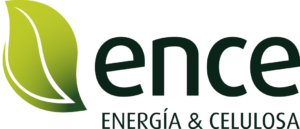Since the detection of Gonipterus platensis in 1991, it has become necessary to establish programs to control this pest, which currently produces losses in growth of up to 20% in timber volume in masses of eucalyptus that have a loss of foliage of 45% on average . Currently this insect is inhibiting every year the growth of between 800,000 and 1,200,000 tons of Eucalyptus globulus wood (20-25% of the annual current growth of eucalyptus estimated by the 4 IFN at 5,350,000 t/year).
This situation may be reversible with biological control strategies against the pest, but for this it is necessary to take into account the need to address phytosanitary problems globally and promote biological control among forest owners, establishing protocols for monitoring and evolution of the plague of easy application. The GOSSCE Group project aims to improve the phytosanitary status of the eucalyptus-producing masses in the Cantabrian coast, affected by the plague of the Gonipterus sp defoliator, reducing the associated production losses, improving the profitability of the owners and local forest industries through innovative mechanisms in biological and technical control following the principles of the integrated fight against pests and the dissemination of knowledge generated through the mountain-industry chain.
Financing entity: Ministry of Agriculture, Fisheries and Food and the European Agricultural Fund for Rural Development (EAFRD).
Term of execution: 2018-2020.
OVERALL OBJECTIVE:
The general objective is to ensure the sustainability of the eucalyptus plantations in the north of Spain, currently in serious danger due to the action of the insect plague Gonipterus platensis.
SPECIFIC OBJECTIVES:
- Group in a joint entity (GOSSCE) the majority of affected agents (forest owners, foresters, administrations, forestry companies …) by Gonipterus platensis.
- Create a common and novel strategy in the evaluation of the affected masses and in the fight against the weevil.
- Develop innovative techniques in the prospection and evaluation of eucalyptus defoliation and in the diagnosis of the presence of Gonipterus platensis (drone application).
- Development of an efficient monitoring system with the tools identified and with the participation of the agents involved (administration, owners and industry).
- Promote new techniques of integrated and biorational control of the main harmful agent (Gonipterus platensis), which affects the Cantabrian and Galician eucalyptus, taking into account environmental safeguards.
- Reinforce this control with the introduction of a new species of Anaphes, which complements and optimizes the current system.
- Optimize the production and distribution of biological control organisms over the territory, from the test plots.
- Improve the productivity and sustainability of the Cantabrian eucalyptus by reducing the levels of this harmful agent.
- Disseminate the results obtained among the base sector of the forest property of the Cantabrian Cornice (both private owners and communities of neighboring mountains in common hand) in a way that allows the propagation and massive reproduction of the parasitoid.
To know more DOWNLOAD / CONSULT EXPLANATORY BROCHURE: Link
